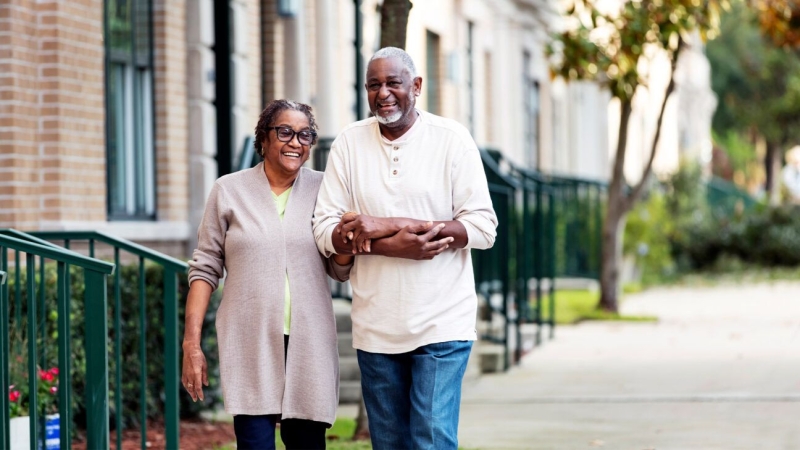
- Actor Danielle Fishel, who played Topanga Lawrence on “Boy Meets World,” revealed she was diagnosed with a very early stage of breast cancer known as DCIS.
- Nearly all females with ductal carcinoma in situ (DCIS) can be cured if it is treated early.
- Breast cancer screening, such as an annual mammogram, can help detect cancer early when it is easier to treat.
Actor Danielle Fishel, who played Topanga Lawrence on the ’90s sitcom “Boy Meets World,” revealed that she has been diagnosed with a “very early” stage of breast cancer.
Fishel, 43, announced the news on August 19 in an episode of “Pod Meets World,” a rewatch podcast she hosts with former costars Rider Strong and Will Friedle.
She began the episode by saying she wanted to share something with listeners, “something that Rider and Will were actually two of the first people I told the news to,” Fishel said.
“I was recently diagnosed with DCIS, which stands for ductal carcinoma in situ. Which is a form of breast cancer,” she said.
Fishel described her cancer as being “technically stage zero,” an early stage of cancer that is typically easier to treat. She is planning on having surgery to remove the cancerous cells, with some follow-up treatment.
Fishel credited her annual breast cancer screening as the reason doctors were able to diagnose her cancer early.
“The only reason I caught this cancer when it is still stage zero is because the day I got my text message that my yearly mammogram had come up, I made the appointment,” she said.
So, “If you have to find out that you have cancer, find out when it’s at stage zero, if possible,” she told listeners.
What is DCIS?
According to the American Cancer Society, ductal carcinoma in situ (DCIS) is a non-invasive or pre-invasive type of breast cancer. It is also called intraductal carcinoma or stage 0 breast cancer.
About one in five new breast cancers are DCIS, the organization’s website says. Nearly all women diagnosed with this early stage of breast cancer can be cured.
In DCIS, “the cells that line the ducts have changed to cancer cells, but they have not spread through the walls of the ducts into the nearby breast tissue,” the American Cancer Society says.
However, sometimes DCIS can become an invasive cancer. When this happens, the cancer spreads from the ducts to nearby tissue. From there, it may metastasize or spread to other parts of the body.
How to assess your breast cancer risk
Regular breast cancer screening, such as an annual mammogram, can help detect breast cancer early when it is easier to treat.
The age at which a woman starts screening depends upon her breast cancer risk, said Richard Reitherman, MD, PhD, radiologist and medical director of breast imaging at MemorialCare Breast Center at Orange Coast Medical Center in Fountain Valley, Calif.
He said the most important risk factors for breast cancer are:
- Age, with a woman’s risk increasing starting at age 35.
- Family history of breast or ovarian cancer.
- Genetics.
- History of certain kinds of benign breast biopsies, such as atypical ductal or lobular hyperplasia, and lobular carcinoma in situ.
- History of chest radiation treatment for lymphoma before the age of 30.
Women without strong risk factors should have their risk assessed by their doctor by age 35, said Reitherman. Those with a family history of breast or ovarian cancer or other possible risk factors should talk to their doctor sooner about their risk.
Two online tools are available to help physicians and women estimate breast cancer risk:
- Breast Cancer Surveillance Consortium (BCSC)
- IBIS Breast Cancer Risk Evaluation Tool
“The first one is designed for women to use to estimate their own risk,” Reitherman told Healthline. “It is really good because it’s very simple. It has about six questions to answer.”
“The second one is a little more accurate,” he said, but “it requires a lot more information, so it is more difficult to fill out.”
When to start screening
“Every woman of average risk for breast cancer should be screened annually with a mammogram, starting at age 40,” said Lori Alfonse, DO, deputy physician in chief at Lehigh Valley Topper Cancer Institute in eastern Pennsylvania.
A woman is considered to have average risk if she doesn’t have a strong family history or personal history of breast cancer, doesn’t have a genetic mutation known to increase the risk of breast cancer, and doesn’t have other risk factors.
The American Cancer Society said women 55 and older with an average risk have the option of having a mammogram every other year, or they can continue with yearly mammograms.
However, “if a woman has a significant family history of breast cancer [or other risk factors],” Alfonse told Healthline, “she should speak to her health care provider about beginning her screening earlier than age 40 and adding additional screening tools such as automated breast ultrasound or breast MRI.”
In general, a woman with a family history of breast cancer should begin screening at an age 10 years younger than the youngest age at which a family member was diagnosed with cancer, said Reitherman.
For example, if a woman’s mother was diagnosed with breast cancer at age 40, the woman should start breast cancer screening at age 30.
Types of breast cancer screening
While an annual mammogram is standard for most women, other types of screening are available.
“Breast MRI is added to mammography for women at a significantly elevated risk (at or above a 20% lifetime risk),” said Reitherman, “[while] breast ultrasound is useful for screening in women with dense breast tissue.”
A 3D mammogram, also known as tomosynthesis, is an option for women with dense breasts, said Candace Westgate, DO, an obstetrics and gynecology physician at Adventist Health in Saint Helena, Calif.
New mammography regulations released last year by the Food and Drug Administration require all breast imaging facilities to notify patients about the density of their breasts.
“If you have a mammogram scheduled, be sure to ask about whether or not you have dense breasts, and then take appropriate action, if any is needed,” Westgate told Healthline.
Who should get genetic testing for breast cancer?
Some people inherit mutations, or changes, in certain genes that increase their risk of breast cancer. Genetic testing can identify mutations in some of these genes.
“There are about eight genetic mutations that increase the risk of breast cancer,” said Reitherman. “The most common and well known are the BRCA mutations, which account for the majority of genetically caused breast cancers.”
He said he recommends all women have a genetic assessment by age 30. This means looking at their risk factors for breast cancer to see if they should go ahead with genetic testing and counseling.
In her practice, Westgate uses the MyRisk by Myriad Genetics to assess the genetic risk of her patients.
“[This] calculates a woman’s 5-year and remaining lifetime risk of breast cancer,” she said. “If a woman is found to be at high risk, she has multiple options available to her, including a change in medical management.”
Other genetic tests are available, some of which may be recommended by your doctor or health insurance plan.
Westgate said if a woman has a genetic mutation that increases the risk of breast cancer, screening can start as early as age 25.
In these cases, screening is done annually with both a mammogram and an MRI, alternating between the two, said Alfonse — screening with a mammogram, followed by an MRI six months later, and so on.
“Women should also consider seeking out an established high risk program such as the Lehigh Valley Topper Cancer Institute program,” she said, “to determine if their gene mutation confers additional risk for other cancers, possibly warranting additional screening tests and bloodwork.”
While the most common and clinically important genes that increase the risk of breast cancer have already been identified, new discoveries may be made, pointed out Reitherman.
So “the best source of information for a woman is to seek an appointment with a certified genetic counselor or knowledgeable physician,” he said.
How to advocate for yourself
To help protect their health, Reitherman strongly recommends that people know their personal risk for breast cancer, as well as their family history of breast, ovarian, and other types of cancer.
He said they should also know the specific screening recommendations for their personal situation based on their risk level.
At the end of the day, “trust yourself,” he said. If you think you need a screening test that your doctor doesn’t offer, he suggests seeking it out on your own. And if your insurance won’t cover the test, consider paying out of pocket for it.
“Be your own advocate,” Reitherman emphasized. “It’s your life, and you should make the ultimate decisions about your personal healthcare.”
Westgate agrees: “Knowledge is power, and understanding your personal and genetic risk of breast cancer is an important step to help you stay ahead of cancer,” she said. “So be proactive with screenings and [healthy] lifestyle changes.”
Takeaway
In a podcast episode with former “Boy Meets World” costars, actor Danielle Fishel, who played Topanga Lawrence on the ’90s sitcom, revealed that she has been diagnosed with a “very early” stage of breast cancer known as ductal carcinoma in situ.
Ductal carcinoma in situ (DCIS) is a non-invasive or pre-invasive type of breast cancer that accounts for about one in five breast cancers. Nearly all women with DCIS can be cured if treatment is started early.
Regular breast cancer screening, such as with an annual mammogram, can catch breast cancer when it is easier to treat. Women with an average risk of breast cancer should start screening at age 40. Those with a higher risk may need to start earlier.




